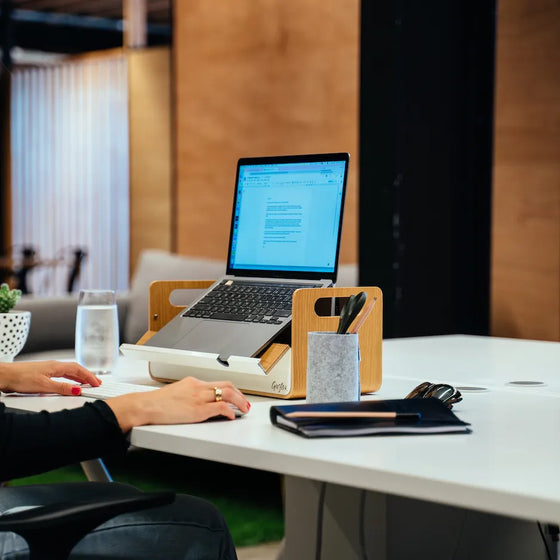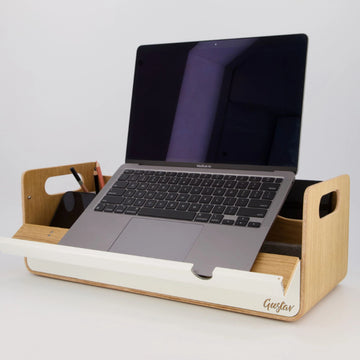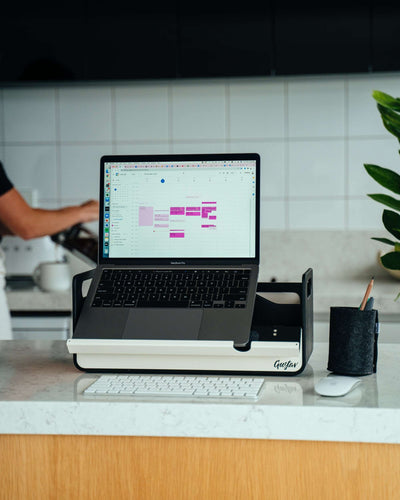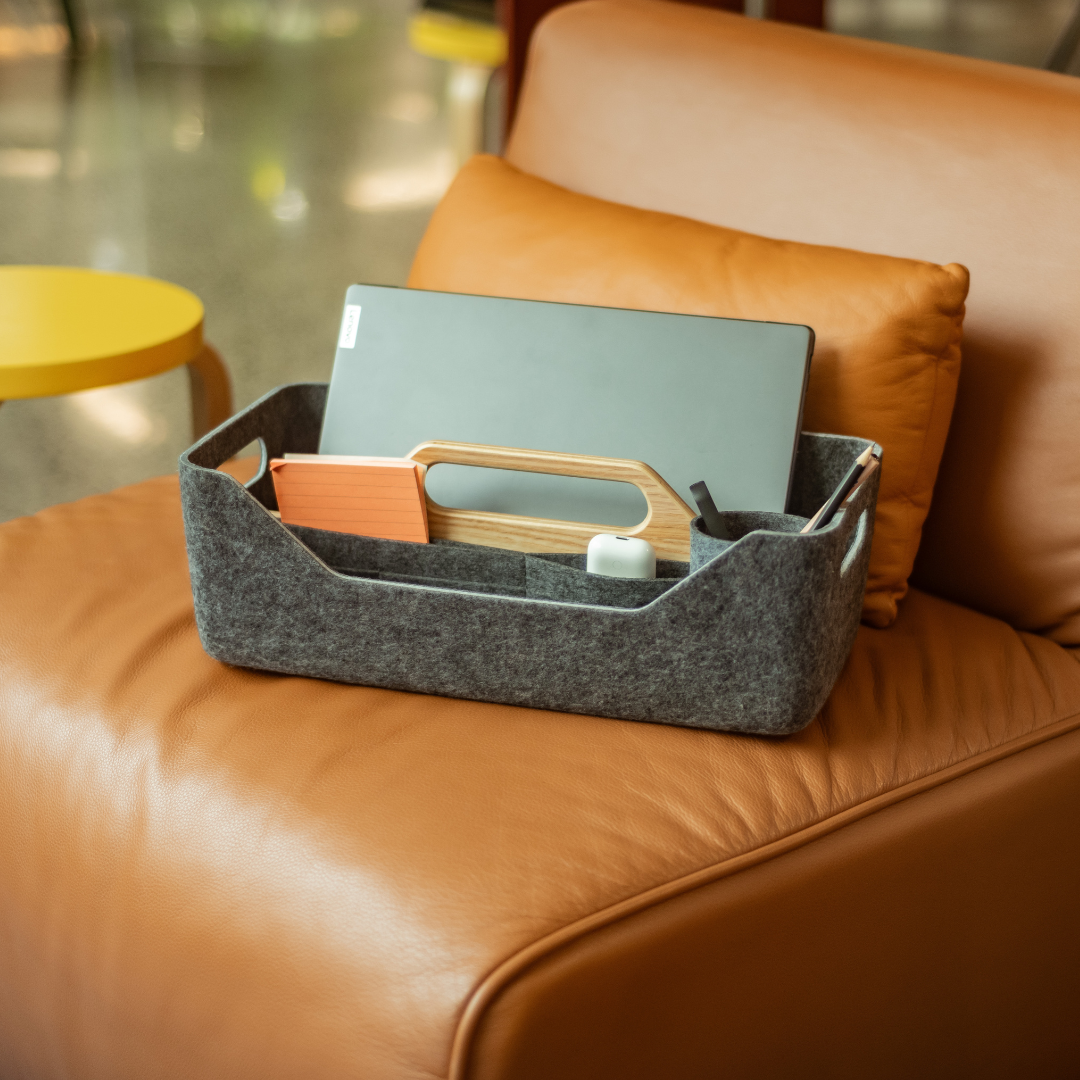Effective Modern Office Design

Modern office design encompasses far more than innovative furnishing concepts and the latest technology; rather, it is a matter of seamlessly integrating trends such as home office and mobile working into the existing room structure.
Professional office space planning always aims to create a well-thought-out working environment. It provides space for creative ideas, takes individual requirements into account and supports employees in the best possible way to fulfill their daily tasks.
What is the goal when planning a new workspace?
The redesign of office space is a comprehensive project. Following trends and orienting oneself to them is a good way to be successful in the long term. It is important to select the right furniture, to make optimal use of existing space and to create an environment that facilitates teamwork and the exchange of knowledge.
On the other hand, the demands of the modern world of work must not be forgotten: Popular concepts such as ‘New Work’ are increasingly changing everyday working life.
New Work in your company
The Coronavirus crisis is having a lasting impact on our working world. The increased use of the home office changed the way we work together and communicate with each other. At the same time, digital work is having a decisive influence on company culture. Modern offices must follow this trend and provide communication ‘zones’ that promote hybrid working and thereby increase the performance of employees.
Change management
The human factor plays a central role in office redesign: well-designed workplaces increase employee motivation and lead to greater job satisfaction in the long term. A successful office redesign process therefore always involves the employees who will ‘live’ the change day to day.

AARNET Sydney
How to plan rooms correctly
1. Division according to purpose
The focus here is on functional areas. Increasingly it is the case that new working models are making fixed workplaces obsolete and established approaches such as activity-based working are replacing rigid
room structures. Thus, it is important to provide employees with flexible workplaces that support employees in carrying out their respective activities.
2. Special features of open-plan offices
Even in offices with an open-floor plan, it is important to pay attention to workspaces that have a minimum size. Each employee should still have enough space to work. For concentrated work, it is necessary to create acoustic and spatial barriers. Specially designed quiet zones enable focused work.
3. Room sizes and heights
When planning new office space, minimum requirements for room height, room size and circulation areas must be observed. This applies both to small offices and to open-space offices. Special attention must be paid to offices in attics: although the sloping ceilings often have a cosy effect, there are no circulation routes. These must be relocated in order to allow employees to continue to move comfortably through the premises.
4. What are the arguments against desk sharing?
The increasing use of desk sharing is making the home office more and more attractive. This approach offers numerous advantages to employees as well as employers: recent studies by the Hans Böckler Foundation show that a smart combination of desk sharing and home office can reduce occupancy costs by up to 20%. (Comparison handelsblatt.com and boeckler.de page 36)
Innovative tools such as Gustav Original can be used for successful implementation of these new ways of working. With the award-winning office toolbox, workplaces can not only be individually designed, but also set up and dismantled in seconds.
Ergonomics and feel-good factors
Combining these two concepts with everyday work doesn't have to be as difficult as it might seem. The following five elements should be considered to optimise office space:
- Lighting
Office lighting influences the ergonomics of the workplace and is subject to legal regulations. For optimal work, both direct and indirect light should be used. A combination of pendant luminaires, standard lamps and shading concepts at the windows helps employees to carry out their activities at all times of the day.
- Acoustics
Acoustics are a decisive factor, especially in open-plan offices, and have a significant influence on the well-being of employees. Logically, sound-absorbing measures are therefore an absolute must, especially in open-plan offices. Fabric-covered partition walls, curtains, but also smart floor coverings provide a remedy. In addition, movable wall systems can help to significantly improve the acoustics in offices.
Ventilation, heating and electrification
The selection of the appropriate ventilation and heating system is essential for any successful office design. During planning, it is important to ensure that the rooms offer an ideal indoor climate (usually around 21 degrees) regardless of the outside temperatures. This must provide optimal results even with a large number of electronic devices. Underfloor heating, modern air-conditioning systems as well as modern insulation systems can help to keep energy costs low.
- Floor coverings
There are a number of different considerations for decision-making when it comes to choosing suitable floor coverings: hard floors (laminate, tiles and similar) are easier to clean, soft floor coverings have a positive effect on acoustics and appearance.
- Consistent design concept
A consistent design concept integrates not only technical factors, but also aspects such as the ideal choice of colours and the textures used. Matt surfaces prevent employees from being dazzled. Well thought-out colour combinations make it possible to visually separate even open-plan offices. In short – colour matters!
Conclusion
Successful office space planning in the age of digitalisation takes a wide variety of aspects into account. Perfectly designed office spaces are in harmony with modern media and create framework conditions that enable flexible and future-oriented work.
Innovative solutions such as the portable Gustav Office Toolbox help with this: Employees always have an ergonomic workstation in the agile office, even with hybrid work models. This supports the implementation of activity-based working, and the offices are optimally equipped for future requirements and tasks.
Photo Credit Title: QIC Sydney Unispace









